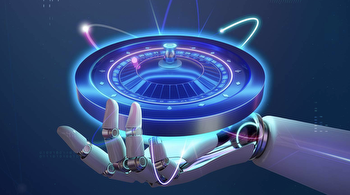A Look Under the Hood: The Integration of Hardware and Software in Modern Online Casinos
Home/*BLOG/Around the Web/ A Look Under the Hood: The Integration of Hardware and Software in Modern Online Casinos
In the digital age, the gambling industry has undergone a significant transformation with the advent of online casinos. These platforms have brought the thrill of traditional casino games to the virtual realm, providing players with convenience and accessibility. Behind the captivating interfaces and immersive experiences lies a complex integration of hardware and software that powers these modern online casinos.
This article delves into the intricate interplay between hardware and software components, shedding light on how they collaborate to create seamless and secure gambling environments.
Hardware Infrastructure
The hardware infrastructure of modern online casinos serves as the backbone for delivering a smooth and reliable gaming experience to players worldwide. At the core of this infrastructure are powerful servers and data centers that host the vast array of casino games, databases, and player accounts.
These servers are equipped with advanced processors, high-speed memory, and robust storage solutions to handle the computational demands of processing numerous transactions and gameplay actions simultaneously.
To ensure minimal downtime and uninterrupted gameplay, online casinos often employ redundancy strategies, including backup servers and failover systems. This redundancy minimizes the risk of service disruptions due to hardware failures, thus maintaining player satisfaction and trust in the platform.
In addition to servers, networking equipment plays a crucial role in online casinos. Load balancers distribute incoming traffic across multiple servers, optimizing resource utilization and preventing overload on any single server. High-speed internet connections and content delivery networks (CDNs) enhance the responsiveness of games, reducing lag and latency for players spread across different geographic locations.
Software Integration
The software layer of online casinos is a complex amalgamation of various components that collaborate to deliver a seamless user experience. Game developers create a diverse range of casino games, including slots, poker, blackjack, and roulette, using programming languages such as HTML5 and JavaScript.
These games are designed to be compatible with various devices, including desktop computers, tablets, and smartphones, ensuring players can enjoy their favorite games on their preferred platforms.
Central to the software integration is the random number generator (RNG), a crucial component that ensures the fairness of casino games. The RNG generates unpredictable outcomes for each game round, simulating the unpredictability of real-world gambling. This element is critical for maintaining player trust, as it prevents any form of manipulation or bias in the game results.
Moreover, the integration of secure communication protocols, such as SSL (Secure Sockets Layer), is essential for safeguarding sensitive player information, including financial transactions and personal data.
Encryption technologies ensure that data exchanged between players and the casino’s servers remains confidential and protected from potential cyber threats. Along with this, improve your experience with the online casinos which feature exciting games and bonuses. Let’s explore them here.
Hardware-Software Synchronization
The seamless integration of hardware and software components is pivotal for providing a smooth, engaging, and secure gambling experience. One of the key challenges in this synchronization is minimizing latency, the delay between a player’s action and the corresponding response from the game. In the context of online casinos, latency can lead to frustration and adversely impact the immersive quality of the experience.
To tackle latency issues, online casinos employ advanced techniques like server-side processing and preloading. Server-side processing involves shifting some of the computational load from the player’s device to the casino’s servers, reducing the processing requirements on the player’s end and enhancing the responsiveness of the game. Preloading involves loading game assets and data in advance, ensuring that the next game round is ready to begin immediately after the player makes a choice.
Furthermore, hardware acceleration technologies, such as graphics processing units (GPUs) and dedicated hardware for cryptography, play a role in optimizing the performance of online casinos.
GPUs are used to render high-quality graphics and animations in real-time, enhancing the visual appeal of the games. Dedicated hardware for cryptography accelerates encryption and decryption processes, ensuring that sensitive data remains secure without compromising the speed of transactions.
Security Considerations
The integration of hardware and software in online casinos extends beyond mere performance optimization—it also addresses security concerns.
The gambling industry handles substantial amounts of money, making it an attractive target for cyberattacks. To counter this, modern online casinos implement multi-layered security measures.
Biometric authentication, such as fingerprint and facial recognition, adds an extra layer of security to player accounts, preventing unauthorized access.
Two-factor authentication (2FA) is also employed to verify player identities during account login or financial transactions.
Additionally, players often turn to Virtual Private Networks (VPNs) to enhance their security and privacy while accessing platforms like DraftKings.
VPNs encrypt internet connections and route them through secure servers, shielding users from potential threats, including cyberattacks, and ensuring a safe gambling experience.
Find out the list of VPNs for Draftkings and know which one is suitable for you.
Conclusion
Modern online casinos are a testament to the harmonious integration of hardware and software, creating immersive, secure, and enjoyable gambling environments for players.
The hardware infrastructure forms the foundation of reliability and redundancy, ensuring uninterrupted gameplay even in the face of hardware failures. Meanwhile, the software layer incorporates sophisticated RNGs, secure communication protocols, and a multitude of games to cater to diverse player preferences.
Through hardware-software synchronization, latency is minimized, and player experiences are enhanced. Technologies such as server-side processing, preloading, and hardware acceleration play crucial roles in achieving smooth performance and engaging gameplay.
Moreover, the paramount emphasis on security measures, including biometric authentication and encryption, safeguards player information and financial transactions from cyber threats.
As technology continues to advance, the integration of hardware and software in online casinos will likely become even more sophisticated, offering players an ever-evolving and exciting gambling experience from the comfort of their devices.






























